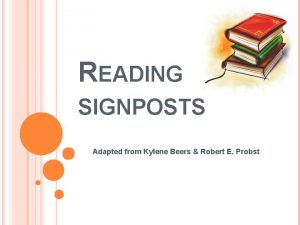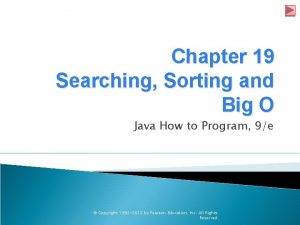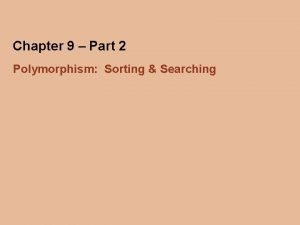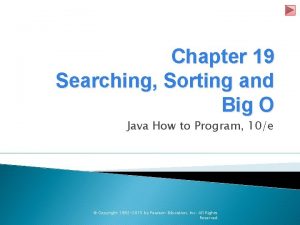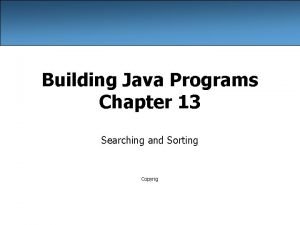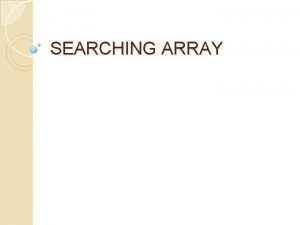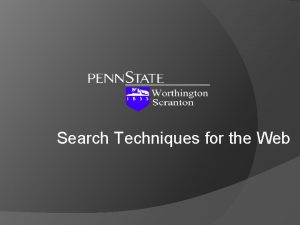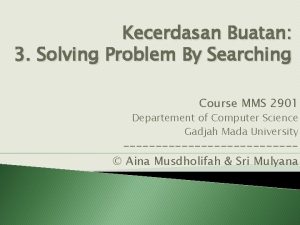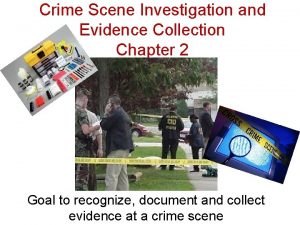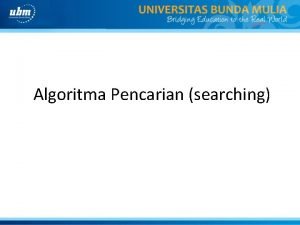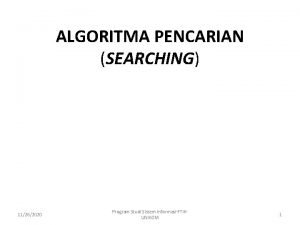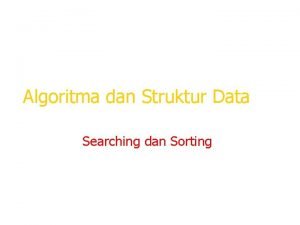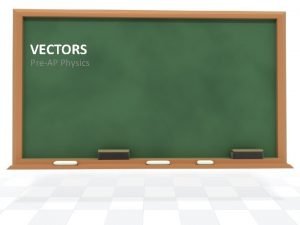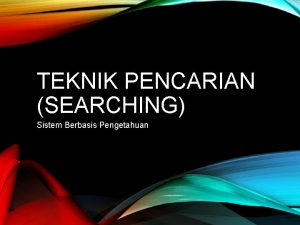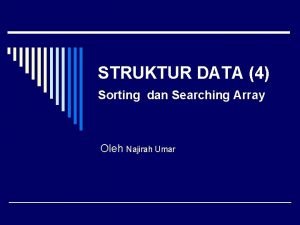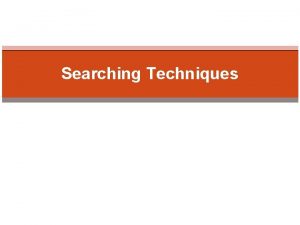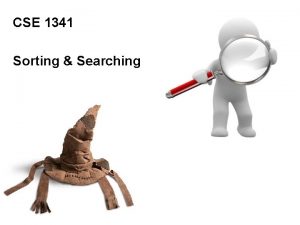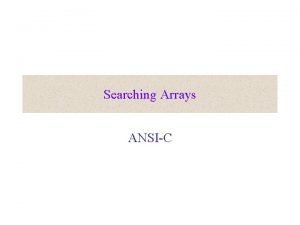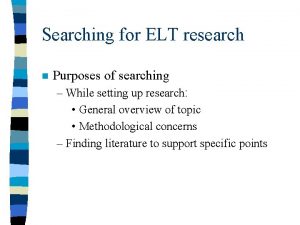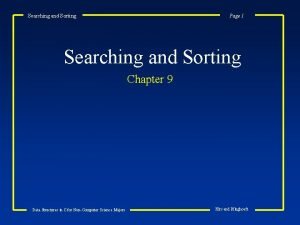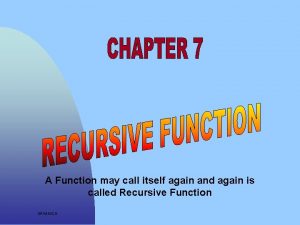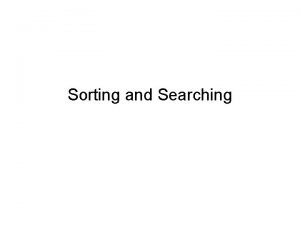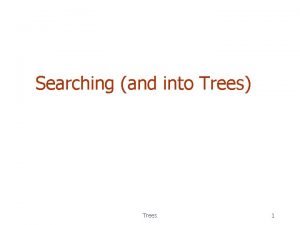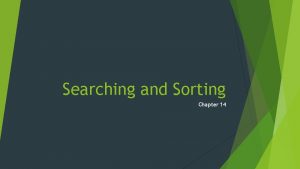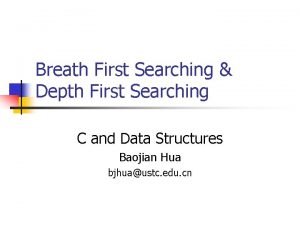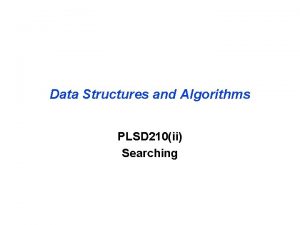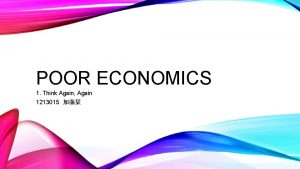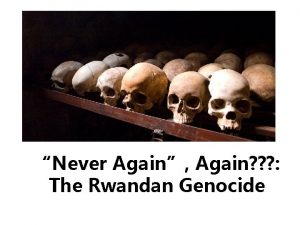Research is searching for answers again and again





























































































- Slides: 93

� Research is searching for answers again and again in a systemic and scientific way. � A form of systemic enquiry that contributes to knowledge. � It is a critical and exhaustive investigation or experimentation having for its aim the discovery of new facts and their interpretation, the revision of accepted conclusions, theories or laws in the light of newly discovered facts or the practical applications of such new or revised conclusions, theories or laws. � Anusandhan, anveshan, pryavekshan, eshana, gave shana are the terms found in classics.

� Systematic and organized � Purposeful � Critical and analytical � Able to communicate findings effectively

� Just a curosity � To know about physiology, natural history or treatment , diagnosis, prevention of a disease � To do the best for our patient � To improve our own training and knowledge, possibly as part of continuining professional development.

� Basic or pure research: conducted to increase the basic knowledge and understanding of the physical, chemical and functional mechanisms of life processes and disease. It provides the building blocks upon which other types of research are based. e. g study of concept of samanya vishesh, tridosha, panchmahabhuta etc. � Applied reseach: is directed towards specific objectives such as development of a new drug, therapy or surgical procedure. It can be conducted with animals, tissue cultures or humans.

These are carried out in clinical settings with patients as subject of studies. It is the branch of medical science that determines the safety and effectiveness of medications, treatment regimens and procedures intended for prevention, treatment or diagnosis of a disease.

� Primary research involves the collection of data that does not already exist. This can be through medical and employment records, questionnaires, direct physical examinations laboratory tests etc. It consists of articles on original studies. � Secondary research involves the summary , collation and synthesis of existing research rather than primary research.

Primary research � Experimental- The allocation or assignment of individuals is under control of investigator and thus can be randomised. Randomised controlled trials and nonrandomised controlled trials are two types. In Random controlled trial the assignment of intervention is purely by the play of chance. It promotes an unbiased evaluation. � Observational- The allocation or assignment of factors is not under the control of investigator.

� It is a method of assessment that is used by a researcher who identifies, obserbs, records, classifies and analyses relevant information in a study without interfering the course of events. � These are considered as natural experiments. � Observational studies dominates the literature.

� Descriptive-studies without a comparison group 1. Person level studies- Case reports Case series reports Cross sectional studies Surveillance 2. Aggregate level studies Ecological corelational studies � It should answer 5 basic questions. WHO, WHAT, WHY, WHEN, WHERE

� Presence of at least two groups, one of which serves as a comparison group � Purpose in epidemiology is to identify and quantify the relationship between an exposure and a health outcome � 3 types- Cohort study(exposure to outcome) Case control (outcome to exposure) Cross section study(measured at same time)

COHORT CASE CONTROL • PROSPECTIVE • RETROSPECTIVE CROSS SECTIONAL • SAME TIME

� Research Problem → can be searched from Ayurvedic texts. � Beejaswarupa Ayurved → Exploration is required.

� Validation of concepts � Experimental Studies: For an Ayurvedic formulation, Pre-clinical trials are not necessary; if there is textual reference for the same. (Indian GCP guidelines) � e. g. maoho. Yau Qaa~Iina. Saa Pla. Ihamayao ip. Ppla. I

� Exploratory Study: - The concepts given in Ayurvedic texts can be explored with the help of Research Methodology. � Research Methodology is a way to systematically solve the research problem. It may be understood as a science of studying how research is done scientifically. In it we study the various steps that are generally adopted by a researcher in studying his research problem along with the logic behind it.

� Corelational Studies: Ø Dushivisha: - Krutrima Visha – Long term use of Medicines (Cumulative Poisons) Ø To establish a correlation between Viruddha. Ahar & Kushtha

IMPERATIVE ONES/EXTENSIVELY USED • PRATYAKSHA • ANUMANA • APTOPDESHA • YUKTI

OTHER ONES � Upamana-knowledge gained on the basis of similarity. � Arthapatti-method of residue � Anuplabdhi/Abhava-unavailability � Sambhava-origin � Atihaya- preachings run through traditions � Cheshta-desire for effort

� The Pramanas are very well versed in Nyaya Shastra. � The main aim of the Nyaya Shastra is to examine the various objects in the universe on the basis of the Pramanas. � The Shastra also advocates the attainment of Moksha or Nishreyas only after acquiring knowledge of the various substances in the universe by the application of Pramana. � Parmanu theory of Vaishesika darshana. � Knowledge of Brahma in Vedanta.

� Prama-characteristics/ distinctiveness/individualism of the object/thing/article. � Prameya-object of knowledge. � Pramata-person acquiring knowledge. � Pramana-way/technique or medium/channel being used. The most essential cause or source for establishment of knowledge/facts is pramana. All the things in universe are Prameyas and they are obtained by Pramana.

� The object to be proved is prameya…the research topic. � The facts which get established during study are prama. � The reseacher is pramata. � The measures, evidences all come under pramana. � Aprama is false knowledge…. viparyaya, sanshaya and tarka.

The concept of pramana has been discussed in the context of punarbhava in C. S. � Upalabddhi, Sadhan, Gyan, Pariksha are the synonyms ………………. Gangadhar � Pramana word has been used in Ayurveda as 1. Pramana by Sushruta 2. Pariksha by Charaka � Acharya Charka has used the word Pariksha and vigyana in place of Pramana. � Pariksha is a process and Pramana is the measure which helps in pariksha. � Knowledge is gained after examination, so prama can be called as sadhya(aim).

All things existent or non existent can be examined by four types of parikshas. By the Pramanas only the Pariksha can be done. These four Pramanas itself are accepted for Parikshana and any other Pramana quoted by any other Shastra can be included in this classification. (Ch. Su. 11/26) � Among the Pramanas Ayurveda has added Yukti of its own. �

� Ayurveda being a Chikitsa Shastra, the Pramanas are particularly described for the Bhishaka for the Samyaka knowledge of the patient, thus enabling him to fulfil the Prayojana of Ayurveda. � Pariksha is used here coz it is a science of practical utility and research.

One who conducts proper pariksha gets success. C. Su 10/5 � Four types of pariksha for determining all existent and non existent things. C. Su 11/17 � Administration of medicine should always be preceded by examination of disease. C. Su 20/20 � Two types of pariksha for the knowledgeable (gyanvatam). C. Vi 8/84 � Siddhanta is defined as conclusion or pronouncement established as an outcome of many assessments and investigations(parikshakai bahuvidham parikshaya) followed by experimentations. C. Vi. 8/37 �

Examination of ten factors is mandatory before getting involved in any type of work for its accomplishment. C. Vi 8/80 1. Kaaran- hetu/karta is one who initiates work independently. E. g. The physician or the research scholar 2. Karanam-measures/all means &methods used to carry out the work. e. g. medicines, instruments etc. 3. Karyayoni-source of an action/basic cause of an action. Cause itself transforms into action. e. g. soil is karyayoni of pitcher or dhatuvaishmya in disease production. Research question/curosity

4. Karya- proper action kept in consideration. e. g. dhatusamya 5. Karyaphala- prayojana or aim of the work. 6. Anubandha- ultimate result (good or bad). 7. Desha- site of the action. 8. Kaal-time factor 9. Pravritti-initiation of action. 10. Upaya- It is the best possible collaboration of kaaran, karan and karyayoni.

Aptopdesha Review of literature Other relevant source of information Pratyaksha Data collection observation Anumana & yukti Analysis of cause and effect and experimentation

� The most imperative, authorative and the foremost pramana is aptopdesha. � After having knowledge from apta, things should be examined by pratyaksha and anumana. If the things are not described beforehand or earlier what is to be gained or achieved through pratyaksha and anumana? Thus two types of examinations are there for the knowledgeable, well-informed persons… C. S. Vi 4/5

� It has been given importance in the form of source of knowledge and as an evidence. It is used as source by the research scholars who do the study again and verify previously laid principles or observations. It is used as an evidence or pramana by those who do not wish to re –search or unable to do the same. � The aptavachana ( sayings or statements) of the apta purusha are aptopdesha. It includes hymns of vedas, other authentic texts. � They( should) speak the truth and genuineness only, without being involved or influenced or prejudiced by any worldly pleasures.

� Types of apta Apta- provides the knowledge acquired through own experiences or direct perceptions. e. g. scientists, biologists etc. Shishta- directs the whole world towards indulgence in virtuous acts and abstinence from sinful acts. Vibudha-who is endowed with special intellect. (Super specialized persons).


� Aptavachana or shabda can be of two types. Vedic and Laukika. � Vedic – preachings of vedas. � Laukika –true knowledge given by apta purusha but according to vedas , not opposing those. e. g. Acharya Charaka, Sushruta etc.


Drishtartha- statements which can be proved or experienced or established. e. g. Dosha are vitiated by hetus and pacified by upakramas. � Adrishtartha- statements which can not be proved or experienced easily. e. g. Salvation or rebirth after death. � Nrita- statements which are absolutely true. e. g. Sadhya diseases have cure. � Anrita- statements which are absolutely not true. e. g. No death after consuming poison. C. Vi 8 �

� ABHIDHA – Statements has direct meaning. � LAKSHANA - Statements does not show direct meaning but denotes close meaning. � VYANJANA- other than above two, may be opposite. � TATPARYAKHYA- meaning according to the context. Shaktigraha Vyakarana, upamana, kosha, aptapurusha, vyavh ara, vakyashesha, vivriti and sanidhya.






Qualities of a Researcher: Ø Research is attitude complemented effectively by action. � The attitude conducive to research have two aspects: One is curiosity; the other is courage to question prevalent beliefs & customs. � The action needed for research also have two aspects: One is acquiring existing knowledge & training in physical & mental skills necessary to do the activities implied in research; the other is the determination to follow a plan with performance.

� Review of literature: One who is not fully conversant with what has gone before has little chance of making a worthwhile contribution. Therefore a researcher has to survey the available literature relating to his field of study. He must keep himself update in his field & related areas.

Ø a) b) c) d) Utility of Review of Literature: To verify the findings of previous study To challenge the conclusions of previous study To extend the study further and To bridge the gaps in the previous study ↓ ↓ Only Rasayana preceded by Panchakarma

Ø Utility of Review of Literature: - In the initial stages of research it helps you to establish theoretical roots of your study, clarify your ideas & develop your methodology; but later on the literature review serves to enhance & consolidate your knowledge base & helps you to integrate your findings with the existing body of knowledge.

Ataosi. Bayau>: satt. M sava-maalaaocya sava-qaa È tqaa ya. Muja. It Ba. OYajyamaaraogyaaya yaqaa Q`auvama ÈÈ (A. ). sa. U. 12À73) (sattmai. Bayau>: sadassyauva-odpazavabaao. Qaanau. Yzanaprao va. OV: -A$Nad%%a TIka) � � � Pathana: Recitation Avabodhana: Deeper understanding Anushthana: Preaching, advocacy

Methods of Learning Pathana Avabodhana Anushthana

The ideal method of learning any text is divided into 3 steps: � Patha � Avabodha & � Anushthana. � Patha means ‘to make by heart’ means repeated reading or reciting Shlokas. � Anushthana is ‘ Do as directed ‘ which means to follow the methods/guidelines as quoted in texts. Thus, Anushthana directly depends on Patha. � But without understanding the meaning of Patha one can’t do the Anushthana. This understanding is ‘Avabodha’.

Learning Adidhi Bodha Acharana Pracharana

1. 2. 3. 4. Adidhi: information is just absorbed. Bodha: involves deeper understanding & gaining knowledge Acharana: practice Pracharana: preaching, advocacy or dissemination of knowledge.

� It is very important to know the current status of knowledge related to our research question. � For heading in right next-step direction, we need to know a lot about current knowledge. WHY LITERARY REVIEW? 1. To discover what exists on a topic. 2. To increase your knowledge of that topic. 3. Use earlier work as a foundation. 4. Find gaps, errors or inconsistencies in previous work. 5. Generate ideas for your own work. 6. Avoid duplication of previous work. 7. Justify and lend authority to your work.

� Primary literature: generated by the researchers or observers themselves and hence report research first hand. � The research may include questionnaires and interviews, lab experiments, epidemiological studies, diagnostic evaluations, methodological studies. � They are usually published in scholarly journals. � University thesis/dissertations, govt. or private research reports.

� Secondary literature: It summarize and draw conclusions from secondary research that involves the summary , collation and synthesis of existing research rather than reporting data collected directly from research subjects or experiments. � Sec or integrative studies are found in professional journals. � Apart from this, books and book chapters are most common sec source but these may often carry personal opinion or judgment.

The specific types of sec studies are � Review articles – systemic and non-systemic � Systemic provides summaries of related primary studies that have been searched for, evaluated , selected and reported according to a rigorous and predefined methodology. � It is an overview that contains a thorough, unbiased search of the relevant lit, explicit criteria for assessing studies and structured presentation of the results.

Other literature � Drug prescribing lit � Consensus/Agreement statements � Critical protocols � Personal observations � Editorial and letters � These may not be necessarily research based and may often carry an element of personal bias.

Online information sources Evidence based (filtered) medical databases Unfiltered medical databases

TANTRAYUKTIS Tantrayuktis are Upayas of Tantra. These are found & applied in Tantra. These serve as“KEYS” of Sastra, without understanding them one cannot acquire the proper knowledge. � Principle by which the relevant & desired idea is expressed coherently, precisely and free from inconsistency and self-contradiction. � Tools for the study of sophisticated subject matter. � Various literary grammatical and compositional techniques of exposition. Tantrayukti is the methodology/systemic approach or technique of studying a tantra to interpret its correct unambiguous meaning for its practical application.

After composing the whole Samhita(Patha ) obviously the method of its composition and interpretation (Avabodha) was needed, so that one can get knowledge from Patha, proper understanding by Avabodha using Tantrayukti, to implement it in clinical practice (Anushthana). After first part one comes to know the map of Samhita, then by applying Tantrayukti, (which are at the end) one can RESTART, reading with basic Tantrayuktis i. e Adhikarana, Yoga, Atitaanagataveksana etc.

� These are mentioned in the end part of Caraka Siddhi 12, where Acarya Dridhabala gives his own introduction. � He mentions that this great text is written by wise author and physician Caraka, and the incomplete 1/3 part of it is completed by himself with the way of Shilonccha Nyaya -literary research method. � This indicates that neither the main author Agnivesha, nor the pratisamskarta Caraka, has used directly the Tantrayukti in the text. But, Sampoorankarta Dridhabala and other commentators have clearly used and applied those.

Dridhbala also mentions – � This text has no lacunae in the words and their meaning. � Devoid of Tantra Dosas. � These Tantrayukti may not be available at each and every chapter or togetherly more in number, but by Samasa - Vyasa methods, all Tantrayukti are described in whole of texts, somewhere one-two and somewhere more in numbers.

Learning-adhyayana q Understanding-avabodha q Teaching-adhyapana q Debate-tadvidyasambhasha q

At first sight all these three words appear similar but , � “NEED” tells ‘WHY’ to go for a particular subject. � “IMPORTANCE ” states ‘WHAT’ are the merits of subject. � “Utility” explains ‘HOW’ to apply the contents of subject. � One who completely knows these Tantrayuktayah himself becomes like a DEEPAK and by wisdom he can see everything written in texts. s. utt 65/43

� As the Sun unfolds lotus and the lamp illuminates the house in the same way Tantrayukti serves for Tantra. � Prabodhana- those concepts (Arthas) which described in short are elaborated by Tantrayukti, as sun unfolds the lotus. � Prakashana- Tantrayukti highlights Gudharthas (secret , hidden/ unsaid/ reading between the lines) which subtly exits in the Tantra, as lamp illuminates the house. c. si 12/16

� Anvaya (Positive correlation)-if one is familiar to one shastra, the other shastra become familiar to him quickly, coz of being conversant to devices and reasonjngs. � Vyatireka(negative correlation)- a physician does not grasp the shastra completely without tantrayukti despite studying the same again and again. � Anvaya Vyatireka-tantra if not understood properly is harmful as that of unskillfully held weapon. Shastra and shastra both are beneficial if handled properly. c. si 12/47 -49

Under the caption of Tantragunas and/or Tantrayuktayah � 17 Tacchilyadi, � 15 Vyakhya , � 7 Kalpana , � 21 Arthashraya are described by Arunadatta , Bhattara Harishchandra &Nilmegha’s. Description. All these 60 entities (17+15+7+21) are extensions or derivations of Tantrayuktayah. These should be considered as devlopment of Tantrayuktayi. Doctrine especially for writing Teeka-Vangmaya.

� Today regarding changing newer Hetuskandha and Lakshanskandha (which is not literally quoted in Samhita) if one wants to drive new Aushadhaskandha, the basic tool for that is one’s own intellect developed on the basis of Shastravabodha; which can be developed by knowledge of Tantrayukti.

� Though Ayurveda accepts various types of methods of the knowledge; the superiority of Pratyaksha remains unchallenged. It is the only criteria which has been accepted by all of the philosophical schools. � The most appreciated and easily convincing means of cognition is direct perception. � The chief tool of Pariksha is Pratyaksha which is achieved by Indriyartha Samyoga.

� Data is the core of the study. � Good quality data yields accurate results. � It should be accurate, reliable and credible. � Generation of good quality data depends on tools, techniques, processes and framework. � Two source are primary and secondary.

� Primary data is collected by investigator during the study. � Collection of data is done by recording history, measuring parameters clinically, by laboratory tests, by imaging pictures, by medical and surgical intervention, by direct interviews, by responses to questionnaires etc. � Training and experience is required for collecting data. � Predetermined methods of collecting and recording data should be built in study protocol.

� Dropouts should not be excluded from the data but recorded and they should be treated as not cured or not completed the study. � Missing data- good options to handle it 1. Exclude all patients with missing data. 2. LOCF-Last observation carried forward- the last available value substitutes for the missing value. It is acceptable only when less than 10% of the data is missing. 3. In case of large missing data the earlier records are used for adjustment esp. if a pattern is followed.

4. When missing data do not follow a discernible pattern, records are artificially completed by imputing missing values but it can amount to fraud. 5. In case of too much missing data one should use the available data only to draw lessons and plan another study. 6. There are many methods to deal with it but none are ideally acceptable.

� Fasting blood sugar-580 mg/d L � PPBS- 3 mg/Dl � Height of a child-12 feet � Weight of pregnant female-2 kg � Vision of an eye- 6/6 in follow up visit – cataract recorded in the same eye in last visit � These should be checked with original recordings of these parameters and corrected when necessary, re-measured and reassayed if possible, otherwise, these should be treated as missing values.

� Errors occur during collection of samples, labeling of specimens, transporting them, performing lab work and reporting results. � Even a good quality data should be subjected to surveillance or monitoring to detect potential errors. � Study case record forms should be short and well organized in a logical sequence. � All questions should have clear cut answers. � Forms for recording data should be practical and kept as simple as possible.

Questionnaires should be designed in a way that only essential data is collected. � Question should be easily understandable with clarity and without confusion. They should evoke precise and pointed answers. � Description of lab methods needs to be specified. Variability between measurements like BP, ECG can be due to subject’s feature, unreliable apparatus, inter and intra observer recording and lab inconsistencies. It should be minimized by repeating the assessment. . e. g BP and pulse may be measured twice or thrice and average reading recorded. Instruments and equipment should be periodically checked and recalibrated. Transfer of data from paper to computer is also prone to error. �

Data management is a term covering generating data, retrieving/capturing it, storing it, verifying it, cleaning it, maintaining its privacy, monitoring, analyzing and destroying it, usually after at least three years after publication of the study. � Data cleaning consists of ensuring that characters or parameters’ variable values fall within valid limits, handling outlier values, correcting or deleting impossible data, removing duplicate entries and detecting and deleting invalid entries. � Collating data involves arranging it in proper order to enable one to compare the data collected from study groups. A master chart displays information on each of the subject of a group in one line. �

� Aa%maoindyamanaaosqaa-naaa sainnak. Yaa-t p`vat-to È vya>a tda%vao yaa baui. Qd: p`%yaxa. M saa ina$cyato ÈÈ (ca. sa. U. 11À20) � p`%yaxa. M È tu Klau t. Vt svayaimand`Iya. Oma-nasaa caaopla. Byato (ca. iva. 4À4)

� p`%yaxa. M (lpma Analpmap`%yaxamaist yadagamaanaumaanayaui@ti. Ba$pla. Byato ya. Orova tavaidind`ya. O: p`%yaxamaupla. Byato tanyaova saint caap`%yaxaai. Na È (ca. sa. U. 11À7) � sata. M ca $pa. Naamaitsainnak. Yaa-ditivap`k. Yaa-davar. Naat kr. Nada. Obalyaanmanaaonavasqaanaat samaanaai. Baharadi. Bavaaditsaa. Oxmyaacca p`%yaxaanauplaib. Qa: tsmaadpr. Iixatmaotducyato p`%yaxamaovaaist naanyadst. Iit È

� The utility can be classified under three subheads: 1. Use in routine life. 2. Use in clinical methodology. 3. Use as a methodology to establish a principle and as a method of research.

� Identification of different objects through nirvikalpaka and savikalpaka types of pratyaksha. � Establishment of identity of both Bhavas (Sat & Asat) is found with the help of Pratayaksha. � Any type of experience or memorization depends on direct perception or the observation only.

Two types of pratyaksha are perceived 1. Pratyaksha of roga (examination of disease) by Nidan Purvarupa, Rupa, Upshaya Samprapti 2. Pratyaksha of rogi (examination of patient) �

a) b) c) � a) b) c) Trividha, Ashtavidha, Dashavidha Data Collection Methods: Experiments Surveys Records

The examination given by Yogratnakar is based on Pratyaksha pramana only. � v"Vfo/k ijh{kk � uk. M+h ijh{kk � ey ijh{kk � ew= ijh{kk � ftºok ijh{kk � 'k. Cn ijh{kk � Li'k. Z ijh{kk � n`d~ ijh{kk � vkÑfr ijh{kk

� Before prescribing any treatment for any kind of symptom, any ayurvedic practitioner goes through a three stage thorough examination of the patient’s body to find out symptoms and discrepancy that the patient body is exhibiting. � jksxeknk. S ijh{ksr rrks·u. Urjek. S"k/ke~A rr% de. Z f. Hk"kd~i'pk. TKkuiwo. Za lkepjsr~AA ¼p- l-w 20@20½ � The threefold examination or trividh pariksha is carried out in systematic stages like Prashana, Pratyaksha and Anumana. .

� The Stage Before Pratyaksha –Prashana (Questioning) � It is the stage where the doctor questions a patient about the symptoms. It is done in order to find out a way to lead the examination procedure of the ailment he is suffering and his basic routine. � Pratyaksha (Observation) is the stage of direct observation. Here the doctor checks the discrepancies in the patient’s body through direct methods of observation. He checks the pulse, heart beat, breathing pattern, skin color, nails and hair of the patient. It is then helpful in drawing logical and clear reasons behind the ailment.

� TYPES OF PRATYAKSHA (OBSERVATION): There are two types of Pratyaksha (observation) done - the observation of patient and the observation of the disease. The observation of the patient is done in order to find out the visible symptoms of ailment in his body. The other observation is that of disease to find out its intensity and seriousness. The body of the patient is thoroughly examined in order to find out what is wrong with the body of the patient and to what extent has the body been gripped by the disease. Here are the two steps of observation: 1. Observation of patient. 2. Observation of disease.

� The modern investigative gadgets are examples of pratyaksha pramana. � For example, if mycobacterium tuberculosis bacteria are found in blood or sputum it’s a proof which is nothing else but pratyaksha pramana which gives us knowledge of T. B in patient. Actually the presence of above germs in the sputum or blood lead us to the inference that the person is suffering from T. B. � Pathological investigations are nothing but findings of direct perceptive knowledge of the thing to be investigated. These are required to establish the specific disease by using exclusion criteria which in turn help in differential diagnosis.

� Extension of Pratyaksha with External Equipments: Microscopes, X-rays, endoscope, laryngoscope, sonography, etc. ECG & EEG T. V. & Radio

� This can be further divided into following points : � 1. In literary research � 2. In clinical research � 3. In fundamental research � 4. In drug research � 5. In experimental study

� Study of manuscripts, old scriptures and classical literature & collection of relevant date in the field of study. E. g. historical value, clinical value, social customs and other cultural aspects which may enrich our existing knowledge of Ayurveda and study of recent literature on the subject for comparison and contribution from the Ayurvedic side. This type of research can be done only by pratyaksha.

� All the laboratory investigations, instruments are the means for clinical research which had a basis of Pratyaksha. � Etiology, Pathologic signs & Symptomatology laid on Pratyaksha. � Effect of therapy & immunology can be stated through Pratyaksha.

� To prove any principle with modern tools & technology. E. g – Man, Environment &their constitutions, development, specific traits & properties, interactions, assimilation, metabolism growth, decay &death.

� Pharmacognosy Taxonomy & Classification � Phytochemistry � Histology � Pharmacology � Toxicology � Agronomy & Ecology � Cultivation & Farming � Adulterations & Substitutes � Effect of drug on any disease. �

1. Invitro research – observation of chemical changes, interactions etc. in test-tubes in laboratory and under Microscope. 2. Invivo research – observation of actions and effects of drugs in living lower animals. 3. Application & observation of drug effects in human beings for toxic effects and idiosyncrasy etc.

 Aha moment signpost examples
Aha moment signpost examples Example of alliteration in song lyrics
Example of alliteration in song lyrics Rise and rise again until lambs become lions
Rise and rise again until lambs become lions Memory moment signpost definition
Memory moment signpost definition Worksheet 2 searching algorithms answers
Worksheet 2 searching algorithms answers Knuth morris pratt pattern matching algorithm
Knuth morris pratt pattern matching algorithm Searching and sorting arrays in c++
Searching and sorting arrays in c++ Searching and sorting in java
Searching and sorting in java Searching and sorting in java
Searching and sorting in java Searching and sorting in java
Searching and sorting in java Searching and sorting in java
Searching and sorting in java Fspos vägledning för kontinuitetshantering
Fspos vägledning för kontinuitetshantering Typiska novell drag
Typiska novell drag Tack för att ni lyssnade bild
Tack för att ni lyssnade bild Ekologiskt fotavtryck
Ekologiskt fotavtryck Varför kallas perioden 1918-1939 för mellankrigstiden
Varför kallas perioden 1918-1939 för mellankrigstiden En lathund för arbete med kontinuitetshantering
En lathund för arbete med kontinuitetshantering Särskild löneskatt för pensionskostnader
Särskild löneskatt för pensionskostnader Tidbok yrkesförare
Tidbok yrkesförare A gastrica
A gastrica Densitet vatten
Densitet vatten Datorkunskap för nybörjare
Datorkunskap för nybörjare Stig kerman
Stig kerman Debatt mall
Debatt mall För och nackdelar med firo
För och nackdelar med firo Nyckelkompetenser för livslångt lärande
Nyckelkompetenser för livslångt lärande Påbyggnader för flakfordon
Påbyggnader för flakfordon Lufttryck formel
Lufttryck formel Svenskt ramverk för digital samverkan
Svenskt ramverk för digital samverkan Kyssande vind analys
Kyssande vind analys Presentera för publik crossboss
Presentera för publik crossboss Argument för teckenspråk som minoritetsspråk
Argument för teckenspråk som minoritetsspråk Bat mitza
Bat mitza Treserva lathund
Treserva lathund Fimbrietratt
Fimbrietratt Bästa kameran för astrofoto
Bästa kameran för astrofoto Cks
Cks Byggprocessen steg för steg
Byggprocessen steg för steg Bra mat för unga idrottare
Bra mat för unga idrottare Verktyg för automatisering av utbetalningar
Verktyg för automatisering av utbetalningar Rutin för avvikelsehantering
Rutin för avvikelsehantering Smärtskolan kunskap för livet
Smärtskolan kunskap för livet Ministerstyre för och nackdelar
Ministerstyre för och nackdelar Tack för att ni har lyssnat
Tack för att ni har lyssnat Vad är referatmarkeringar
Vad är referatmarkeringar Redogör för vad psykologi är
Redogör för vad psykologi är Stål för stötfångarsystem
Stål för stötfångarsystem Tack för att ni har lyssnat
Tack för att ni har lyssnat Borra hål för knoppar
Borra hål för knoppar Orubbliga rättigheter
Orubbliga rättigheter Fr formel
Fr formel Tack för att ni har lyssnat
Tack för att ni har lyssnat Steg för steg rita
Steg för steg rita Verksamhetsanalys exempel
Verksamhetsanalys exempel Tobinskatten för och nackdelar
Tobinskatten för och nackdelar Blomman för dagen drog
Blomman för dagen drog Gibbs reflekterande cykel
Gibbs reflekterande cykel Egg för emanuel
Egg för emanuel Elektronik för barn
Elektronik för barn Kvinnlig mantel i antikens rom
Kvinnlig mantel i antikens rom Strategi för svensk viltförvaltning
Strategi för svensk viltförvaltning Kung dog 1611
Kung dog 1611 Indikation för kejsarsnitt på moderns önskan
Indikation för kejsarsnitt på moderns önskan Ro i rom pax
Ro i rom pax Tack för att ni lyssnade
Tack för att ni lyssnade Enheter för massa
Enheter för massa Anafor dikt
Anafor dikt Inköpsprocessen steg för steg
Inköpsprocessen steg för steg Rådet för byggkompetens
Rådet för byggkompetens Etik och ledarskap etisk kod för chefer
Etik och ledarskap etisk kod för chefer Skivepiteldysplasi
Skivepiteldysplasi Myndigheten för delaktighet
Myndigheten för delaktighet Frgar
Frgar Sju principer för tillitsbaserad styrning
Sju principer för tillitsbaserad styrning Läkarutlåtande för livränta
Läkarutlåtande för livränta Tät skog karttecken
Tät skog karttecken Gumman cirkel
Gumman cirkel Shivaiter
Shivaiter Vanlig celldelning
Vanlig celldelning Bris för vuxna
Bris för vuxna Big brother rösta
Big brother rösta Sequential searching in information retrieval
Sequential searching in information retrieval Searching for solutions in artificial intelligence
Searching for solutions in artificial intelligence Pencarian elemen dalam array disebut juga dengan
Pencarian elemen dalam array disebut juga dengan Verbatim meaning in google search
Verbatim meaning in google search Orthogonal range searching
Orthogonal range searching Solving problem by searching
Solving problem by searching While the csi team is searching the crime scene, _____.
While the csi team is searching the crime scene, _____. Contoh algoritma searching
Contoh algoritma searching Algoritma searching
Algoritma searching Sorting dan searching
Sorting dan searching A storm system moves 5000 km due east
A storm system moves 5000 km due east Teknik searching adalah
Teknik searching adalah Pengertian searching dalam struktur data
Pengertian searching dalam struktur data



